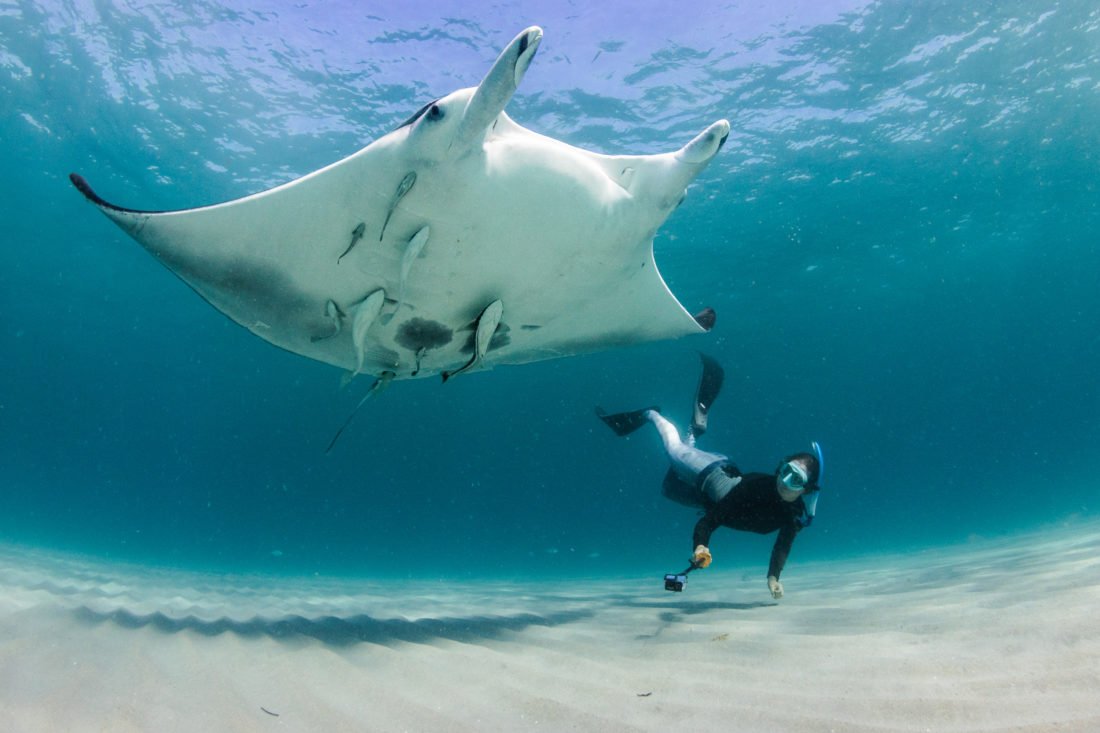7 Fascinating Facts About Giant Manta Rays
Our oceans and seas are full of amazing creatures, but few are more awe-inspiring than the giant manta ray. Thanks to their giant size and unique shape, they’ve often inspired creates in fantasy and science fiction stories. But there’s plenty more to these dream-like creatures – read on to learn 7 fascinating facts about giant manta rays:

1) They really are giants
I know, we said there’s more to these creatures than their size, but they truly are magnificent giants! The giant manta ray (Mobula biostris) is the largest ray in the world, with a “wing” span of up to 29 feet (8.8 meters) and weighs as much as 5,300 pounds or nearly 2 ½ metric tons – that’s more than a large great white shark!
2) They do somersaults while eating
Giant manta rays are filter feeders, like many whales. They swim with their mouths wide open, sucking in tiny marine crustaceans which are filtered by gill plates that line their mouth.
To be more efficient eaters, they sometimes do a series of somersaults through the water column when they find a concentration of food. They are also known to team up with others and create a whirlpool of krill and zooplankton by following each other in a circular motion.
3) They have to swim constantly
Like great white sharks, giant manta rays have to swim constantly to keep water moving over their gills, meaning they never stop moving for the full 25+ years of their lives.

4) They don’t breed often
Females usually give birth every two years, producing one pup, sometimes two. The pregnancy lasts about 12 months and they are livebearers. This means they give birth to their young, rather than laying eggs, as some other fish do. The young can fend for themselves almost immediately and look exactly like miniature versions of their parents. Though at 3 ½ to 4 ½ feet and weighing around 20 pounds they are already pretty big fish!
Learn about more fascinating ocean species!
5) They are the thinkers of the fish world
Giant manta rays are intelligent and have the largest brain-to-size ratio of any fish. They can learn, remember, and even recognize their reflection in a mirror. They can navigate their environment and regularly visit the same areas. This includes cleaning stations in the coral reefs, where smaller fish remove parasites and dead skin.
6) They have three pairs of appendages
These wonderful rays are unique among vertebrates in having three pairs of appendages: their wings (actually pectoral fins), their gills, and the extended lobes that hang from their mouth and help channel water.
7) They are shallow-water feeders
Although great manta rays have been found in exceptional cases to dive to nearly 3,300 feet (1,000 meters), they feed in shallow waters of between 3 feet (1 meter) and 40 feet (12 meters). While they eat in these shallow waters, they do enjoy swimming in open water.

Giant manta rays are a protected species in international waters and many countries have banned fishing for these incredible rays. This includes Indonesia, formerly the largest manta ray fishery, which put an embargo on manta ray fishing and trade in 2014. Ecotourism also helps; swimming with rays means that a live manta ray is worth far more than the alternative.





